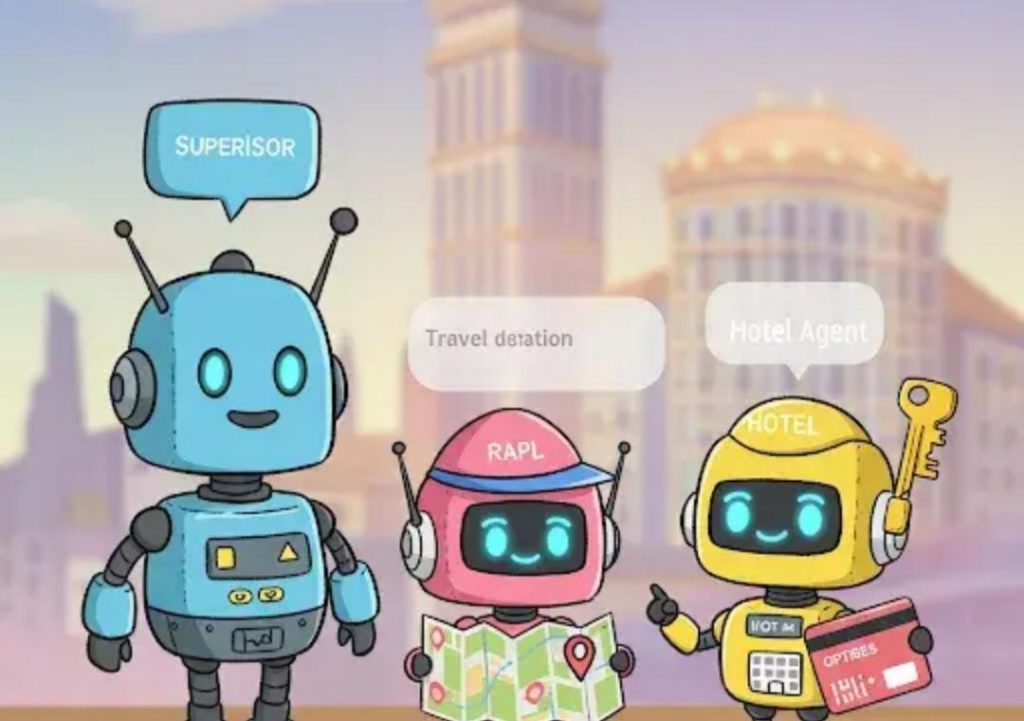
Multi-agent Collaboration Mimics Real Team Dynamics
When it comes to artificial intelligence (AI) and machine learning, many organizations rely on a single AI agent to perform tasks. However, this one-size-fits-all approach can be limiting. What if you could deploy a team of AI agents, each specializing in different tasks, communicating with each other, and collaborating to achieve common goals? Welcome to the world of multi-agent systems!
In this blog post, we’ll explore the benefits of multi-agent collaboration and how it can revolutionize the way you approach AI-driven tasks.
The Limitations of Single-Agent Systems
Single-agent systems, where a single AI agent is responsible for performing a task, have their limitations. For instance, they may not be able to:
- Handle complex tasks: Single agents may struggle to handle tasks that require multiple skills, expertise, or perspectives.
- Adapt to changing requirements: Single agents may not be able to adapt quickly to changing requirements or new information.
- Provide diverse insights: Single agents may not be able to provide diverse insights or perspectives, which can lead to incomplete or biased results.
The Power of Multi-Agent Systems
Multi-agent systems, on the other hand, offer a more robust and scalable approach. By deploying multiple AI agents, each specializing in different tasks, you can:
- Handle complex tasks: Multi-agent systems can handle complex tasks by breaking them down into smaller, manageable tasks that individual agents can focus on.
- Adapt to changing requirements: Multi-agent systems can adapt quickly to changing requirements or new information by allowing agents to communicate and adjust their approaches.
- Provide diverse insights: Multi-agent systems can provide diverse insights and perspectives by combining the strengths of individual agents.
How Multi-Agent Systems Work
In a multi-agent system, each agent is designed to perform a specific task or set of tasks. These agents communicate with each other through predefined protocols or interfaces, allowing them to share information, coordinate their actions, and adapt to changing circumstances.
Here’s a high-level overview of how multi-agent systems work:
- Task decomposition: The task is broken down into smaller, manageable tasks that individual agents can focus on.
- Agent allocation: Each agent is allocated a specific task or set of tasks based on their capabilities and expertise.
- Information sharing: Agents share information and coordinate their actions through predefined protocols or interfaces.
- Adaptation: Agents adapt to changing requirements or new information by adjusting their approaches and communicating with other agents.
- Output generation: The output of each agent is combined to generate the final result.
Real-World Applications of Multi-Agent Systems
Multi-agent systems have numerous real-world applications across various industries, including:
- Research and development: Multi-agent systems can be used to simulate complex research scenarios, such as predicting the spread of diseases or optimizing supply chains.
- Validation and testing: Multi-agent systems can be used to validate and test complex systems, such as autonomous vehicles or artificial intelligence-powered chatbots.
- Reporting and analysis: Multi-agent systems can be used to generate reports and analyze complex data sets, such as financial transactions or customer behavior.
- Customer service: Multi-agent systems can be used to provide personalized customer service, such as chatbots that can handle multiple customer inquiries simultaneously.
Conclusion
In conclusion, multi-agent collaboration mimics real team dynamics by allowing different agents to specialize, communicate, and collaborate across tasks. This modular setup creates digital workflows that mirror human teamwork, but at machine speed and scale.
By embracing multi-agent systems, organizations can leverage the strengths of individual agents to achieve complex tasks, adapt to changing requirements, and provide diverse insights. Whether you’re working on research and development, validation and testing, reporting and analysis, or customer service, multi-agent systems can help you achieve your goals more efficiently and effectively.
Source:



